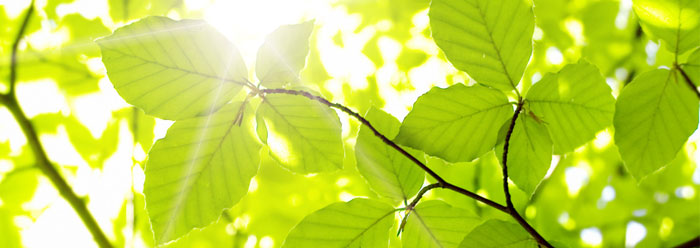The same patterns show up in the circular layers of a pinecone.
Botany
Newfound Nitrogen Harmony Saves Tropical Forest Trees
 New research shows that tropical forests can rehabilitate themselves after clear-cutting by using clever ways to find enough of the nitrogen they need to thrive. More...
New research shows that tropical forests can rehabilitate themselves after clear-cutting by using clever ways to find enough of the nitrogen they need to thrive. More...
Amber Flowers Challenge Dinosaur Depictions
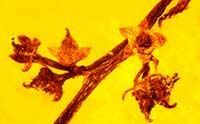 Dinosaur dioramas don’t display flowers and grasses—supposedly because they had not yet evolved. But amazing amber fossils refute that idea by showing the abrupt appearance of fully-formed flowers. More...
Dinosaur dioramas don’t display flowers and grasses—supposedly because they had not yet evolved. But amazing amber fossils refute that idea by showing the abrupt appearance of fully-formed flowers. More...
Complex Bioengineering in Blooming Flowers
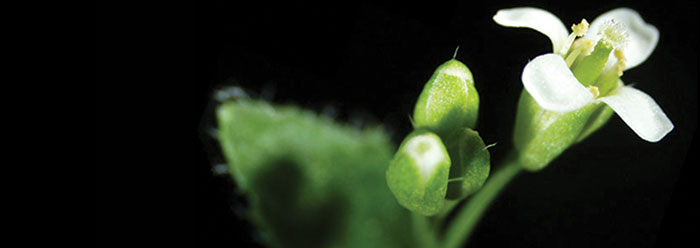
Have you ever wondered how a plant knows when it’s time to flower? How does it know it needs to bloom and reproduce to perpetuate itself for future generations? Unlike animals, plants cannot get up and move around as a means to adjust to their environment. They have to respond to their surroundings, essentially, where they are planted. More...
New Fossil Cache Shows Plants Haven't Changed
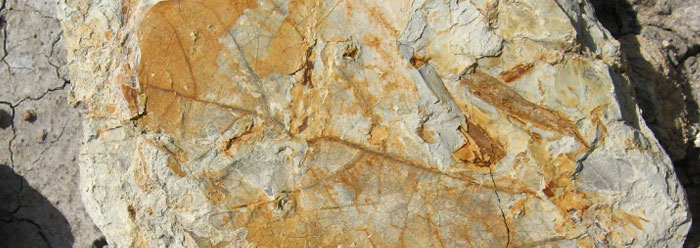
A coal mine in the Cerrejón Formation of Colombia has yielded a gold mine of fossils. This particular cache preserved a time in earth history when the tropical climate was quite different from today’s.
But despite the different climate, the fossilized tropical plants were the same as today’s, albeit less diverse. More...
Plants Use Underground 'Fungal Internet' to Communicate
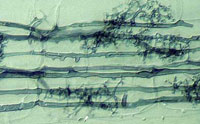 Amazingly, the plants that were not under insect attack themselves, but connected to a victimized plant by the underground fungal network, began to produce a defensive chemical response in their cells. More...
Amazingly, the plants that were not under insect attack themselves, but connected to a victimized plant by the underground fungal network, began to produce a defensive chemical response in their cells. More...
Shocking Evidence of Electrical Signals in Plants
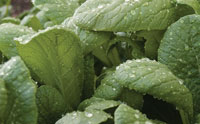 Proteins inside plant cells transmit jasmonate's Paul Revere-like message to their nuclei where intermediate messengers activate and coordinate different defense-related genes. More...
Proteins inside plant cells transmit jasmonate's Paul Revere-like message to their nuclei where intermediate messengers activate and coordinate different defense-related genes. More...
Tiny Ocean Plants Offer Biochemical Enigma

Phosphorus, number 15 on the periodic table of elements, is considered a basic component of all cell membranes. But the recent discovery of single-celled photosynthetic organisms surviving without the chemical element in their membranes is going to require some major rewrites to biochemistry textbooks.
How do these tiny plant cells function without phosphorus? More...







